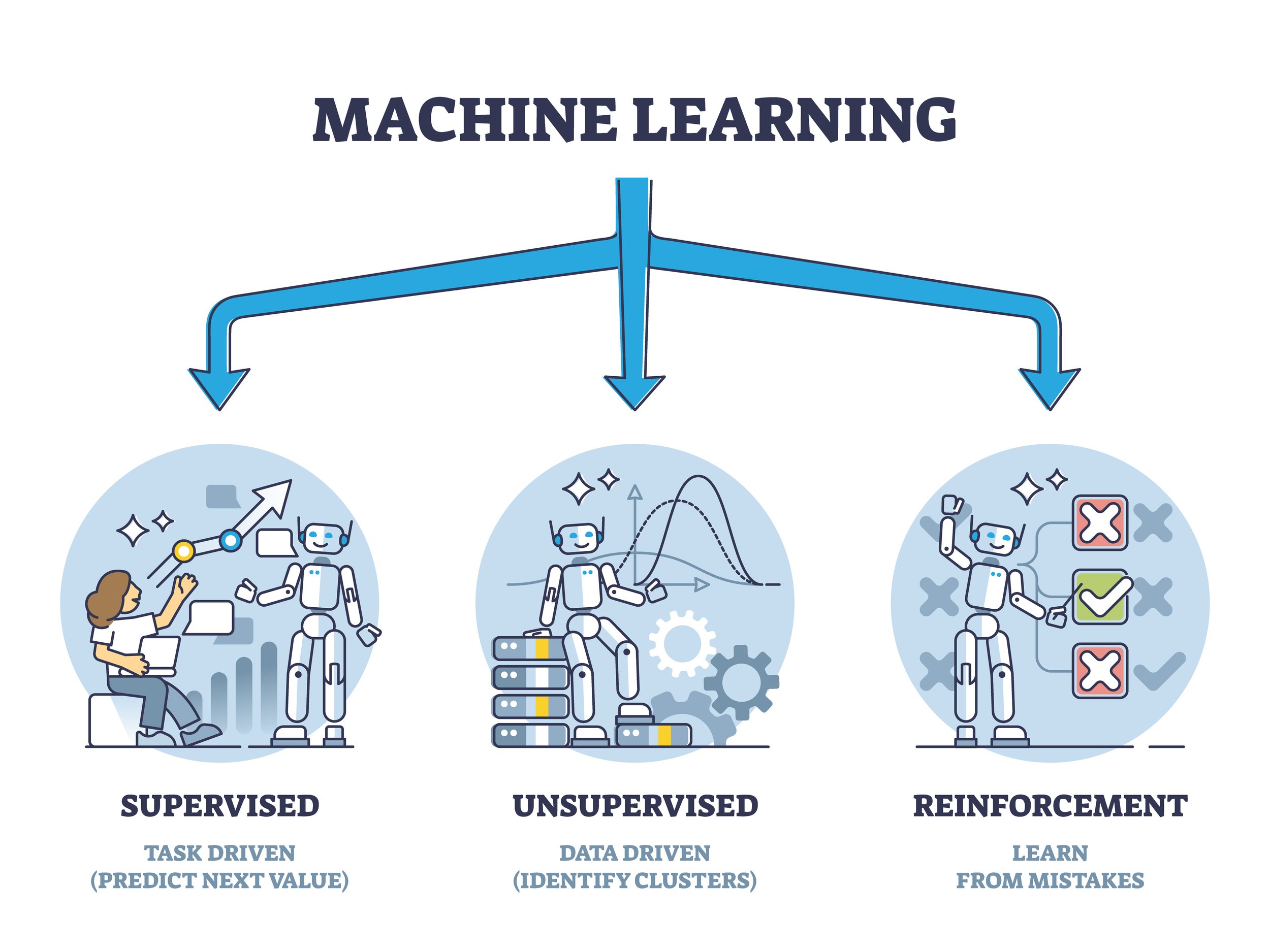Machine Learning
Learn the Basics of Machine Learning
Machine Learning (ML) is a subset of artificial intelligence (AI) that focuses on developing algorithms that allow computers to learn from data and make predictions or decisions without being explicitly programmed. By leveraging statistical techniques, ML algorithms identify patterns and relationships in data, enabling applications that range from predictive analytics to autonomous systems.
Key Components of Machine Learning:
Types of Machine Learning
Machine Learning can be broadly categorized into three types:
Supervised Learning: Algorithms are trained on labeled data, where the input and the desired output are known. The model learns to make predictions or classify data based on this training. Examples include regression and classification tasks.
Largest Platforms: TensorFlow, Scikit-Learn, Keras
Unsupervised Learning: Algorithms work with unlabeled data, identifying patterns and relationships without predefined outcomes. Common techniques include clustering and dimensionality reduction.
Largest Platforms: Apache Spark, H2O.ai, Scikit-Learn
Reinforcement Learning: Algorithms learn by interacting with an environment, receiving rewards or penalties based on their actions. This approach is often used in game playing, robotics, and autonomous driving.
Largest Platforms: OpenAI Gym, Google DeepMind, RLlib
2. Data Preprocessing
Data preprocessing involves preparing raw data for training ML models. This step is crucial as it ensures the quality and relevance of the data used.
Data Cleaning: Handling missing values, removing duplicates, and correcting errors.
Data Transformation: Normalizing or scaling data, encoding categorical variables, and feature engineering.
Data Splitting: Dividing data into training, validation, and test sets to evaluate model performance.
3. Model Training and Evaluation
Training a machine learning model involves feeding the preprocessed data into the algorithm to learn patterns and make predictions. Evaluation metrics are then used to assess the model's performance.
Training: The model learns from the training data by adjusting parameters to minimize prediction errors.
Evaluation: Metrics such as accuracy, precision, recall, F1 score, and mean squared error are used to evaluate model performance on validation data.
Hyperparameter Tuning: Optimizing model parameters to improve performance, often using techniques like grid search or random search.
4. Common Algorithms
Various algorithms are used in machine learning, each suitable for different types of tasks and data structures.
Linear Regression: Predicts continuous outcomes based on linear relationships between input variables.
Logistic Regression: Used for binary classification tasks, predicting the probability of an outcome.
Decision Trees: Models that split data into branches to make predictions, useful for classification and regression tasks.
Random Forests: An ensemble method that combines multiple decision trees to improve accuracy and reduce overfitting.
Support Vector Machines (SVM): Finds the optimal boundary between classes for classification tasks.
Neural Networks: Composed of layers of interconnected nodes, capable of learning complex patterns in data, especially useful for deep learning tasks.
Applications of Machine Learning
Machine Learning has wide-ranging applications across various industries, driving innovation and efficiency:
Healthcare: Enhances diagnostics, personalizes treatment plans, and improves patient care through predictive analytics and data-driven insights.
Finance: Automates trading, detects fraudulent activities, and assesses risk using sophisticated models and algorithms.
Retail: Optimizes inventory management, personalizes customer experiences, and forecasts demand to streamline operations.
Marketing: Improves targeting and personalization, measures campaign effectiveness, and enhances customer segmentation.
Transportation: Powers route optimization, predictive maintenance, and autonomous vehicle technologies.
iTechnology’s Commitment to Machine Learning
Machine Learning is at the forefront of technological advancement, empowering organizations to make data-driven decisions and innovate continuously. At iTechnology, we are committed to exploring every facet of Machine Learning, from advanced algorithms to practical applications. Our mission is to transform complex data into actionable insights, driving innovation and operational excellence for our clients. We strive to deliver user-friendly, ML-driven solutions that not only enhance business performance but also create new opportunities for growth and success.
By understanding and implementing Machine Learning, businesses can unlock the full potential of their data, fostering a culture of informed decision-making and continuous improvement. At iTechnology, we are dedicated to being at the forefront of this technological revolution, guiding our clients through the complexities of Machine Learning to achieve sustainable, data-driven success. Our mission is to turn innovative ML technologies into practical, revenue-generating solutions that drive business success and enhance user experiences.









